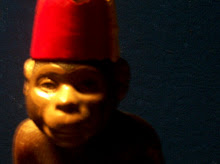1) burn Christian's body
2) mix Christian's ashes in cake batter and bake cake
3) eat Christian cake
The fancy word scholars use for this is endocannibalism. The most common example familiar to us is found in the Christian (no direct relation) sacrament of the Eucharist wherein the body and blood of Christ are consumed. But it is a common funerary practice whether undertaken literally or symbolically. Here are some anthropological examples, one of which sounds quite like my own:
Endocannibalism symbolized... reverence for the dead, an incorporation of the spirit of the dead into living descendants, or a means of insuring the separation of the soul from the body. A Mayoruna man once expressed a wish to remain in his village and be eaten by his children after his death rather than be consumed by worms in the white man's cemetery.Another snippet:
In recent times the Panoan, Yanomamö, and other lowland groups have consumed the ground-up bones and ashes of cremated kinsmen in an act of mourning. This still is classified as endocannibalism, although, strictly speaking, "flesh" is not eaten. The Yanomamö mix the bones and ashes with plantain soup before consuming the mixture.
the consumption of members within one's own culture, group or tribe is called endocannibalism, which is often associated with ritual burial ceremonies and has been controversially referred to on occasion as "compassionate cannibalism." Mortuary cannibalism has been considered to be the most widely practiced form of endocannibalism, often excluding murder and focusing on already deceased corpses.mmm...cake.
For example, according to anthropologist Beth Conklin in article by Ellie Shick mortuary cannibalism amongst the Wari tribe of the Amazon rainforest had a "socially integrative dimension." Upon consumption of the deceased group member, the spirit of the dead was believed to be absorbed by the entire tribe and was considered by them to be one of "the most respectful ways to treat a human body."


